|
ID |
Nickname |
Country / City |
Languages |
Taxonomies |
Comment |
Project / Group |
Map |
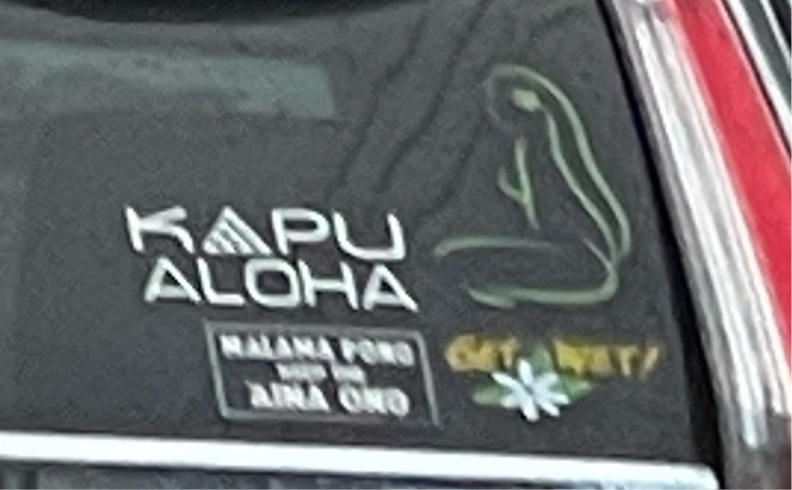
|
46050
|
|
United States
Kaneohe
|
|
|
SU: Check Up #2
- What language is used on the sign?:
The language that is used on the sign is Hawaiian.
- How are the language presented?:
The language is presented in big, thin, white letters.
- Who is the audience?:
The audience is the general public but it is mainly for locals.
- What is the domain?:
The domain is the back of a car used as a bumper sticker.
- What is sign telling people?:
The sign might be telling people to always live with aloha. Kapu Aloha honors the energy and life found in aloha - compassion - and helps us focus on its ultimate purpose and meaning.
- Why is Hawaiian being used here?:
Hawaiian is being used here to catch the attention of the locals. To send out the message, especially to them, that it is important to live with aloha anywhere and everywhere.
|
Multilingual Hawaiʻi
|
|
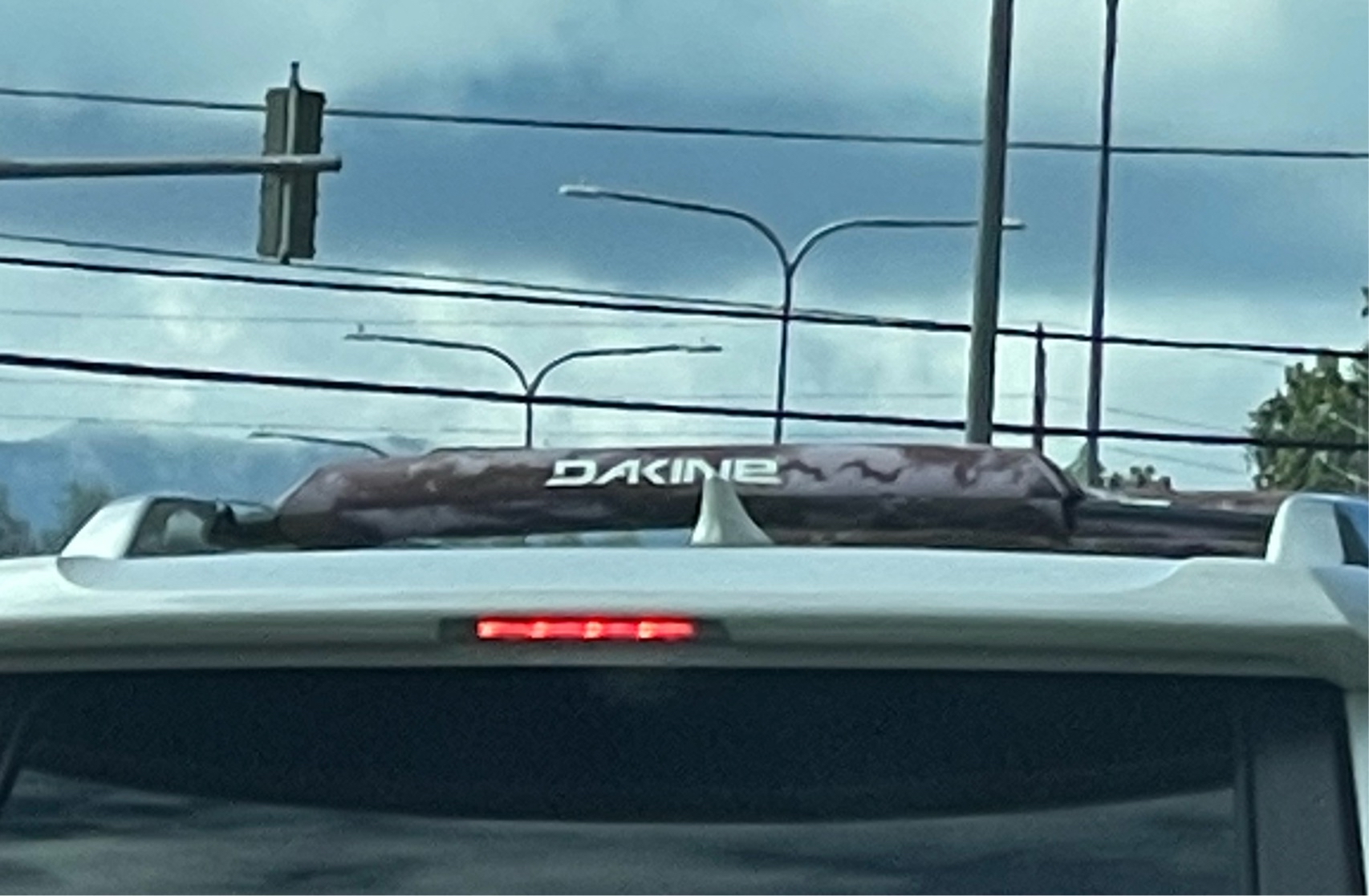
|
46052
|
|
United States
Kaneohe
|
|
|
SU: Check Up #2
- What language is used on the sign?:
The language that is used on the sign is Hawai’i Creole or Pidgin.
- How is the language presented?:
The language is presented in all capital, white letters.
- Who is the audience?:
The audience is the general public but it is more commonly known by locals.
- What is the domain?:
The domain is on the top of a car in public.
- What is the sign telling people?:
The sign is the name of a clothing brand that is commonly known in Hawai’i.
- Why is Pidgin being used here?:
Pidgin is being used here because it is appropriate since we live on an island that consists of people who speak Pidgin and it could also be that they’re showing that they’re proud to be a local.
|
Multilingual Hawaiʻi
|
|
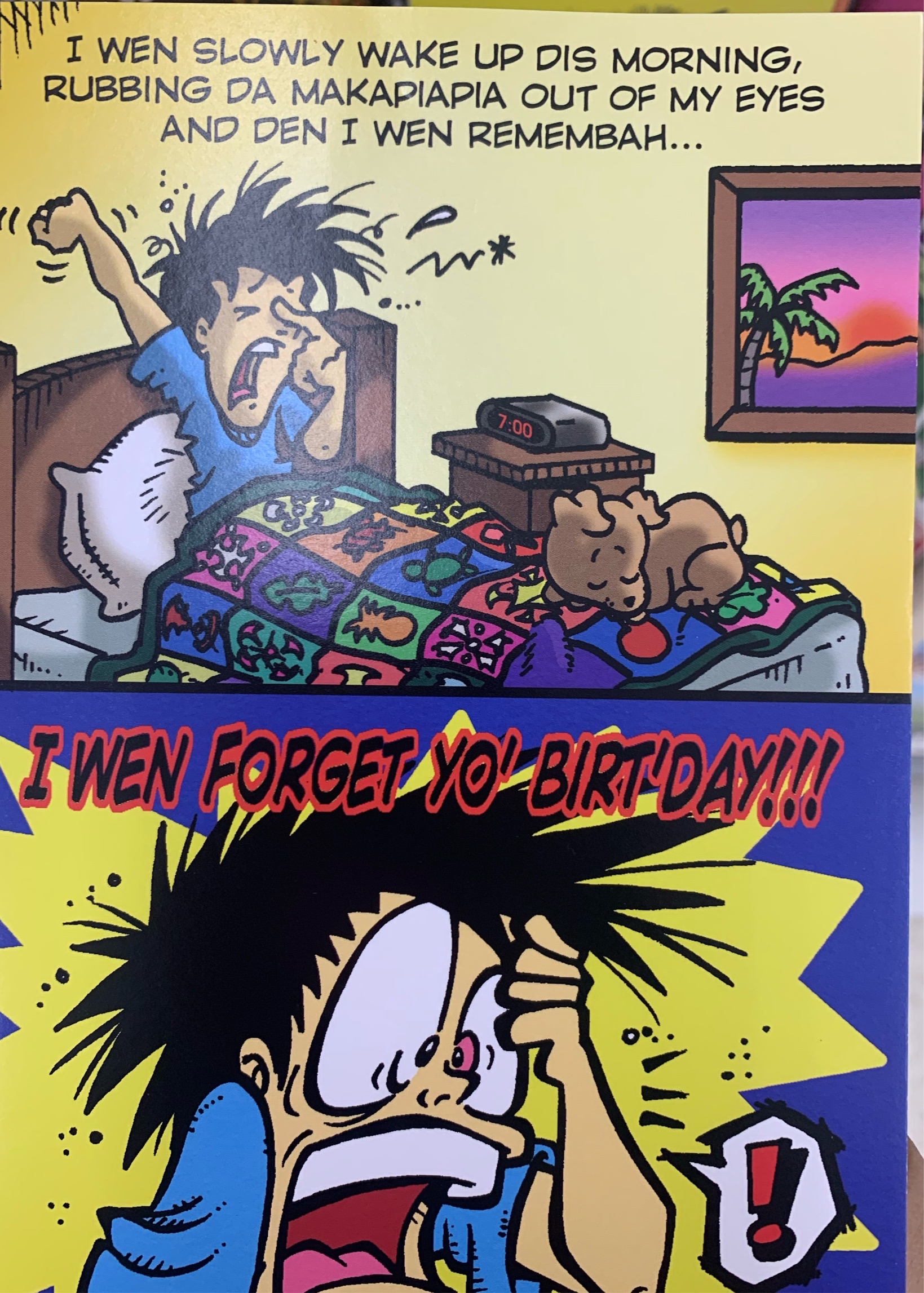
|
46053
|
|
United States
Kaneohe
|
|
|
SU: Check Up #2
- What languages are used on the sign?:
The languages that are used on the sign is Hawai’i Creole or Pidgin, Hawaiian and English.
- How is the language presented?:
The languages are presented in small, skinny, black letters but also in big, bold, black and red letters.
- Who is the audience?:
The audience is the general public, but would probably be more directed towards locals.
- What is the domain?:
The domain is on a birthday card in a public store.
- What is the sign telling people?:
It is telling people that this boy was slowly waking up this morning, rubbing the makapiapia (mucous of the eye) out of his eyes and then he remembered that he forgot this person’s birthday.
- Why is Pidgin and Hawaiian being used here?:
Pidgin and Hawaiian are being used here because it is an entertaining way to write a birthday card. It is appropriate to give someone who knows and is exposed to the language of Pidgin.
|
Multilingual Hawaiʻi
|
|
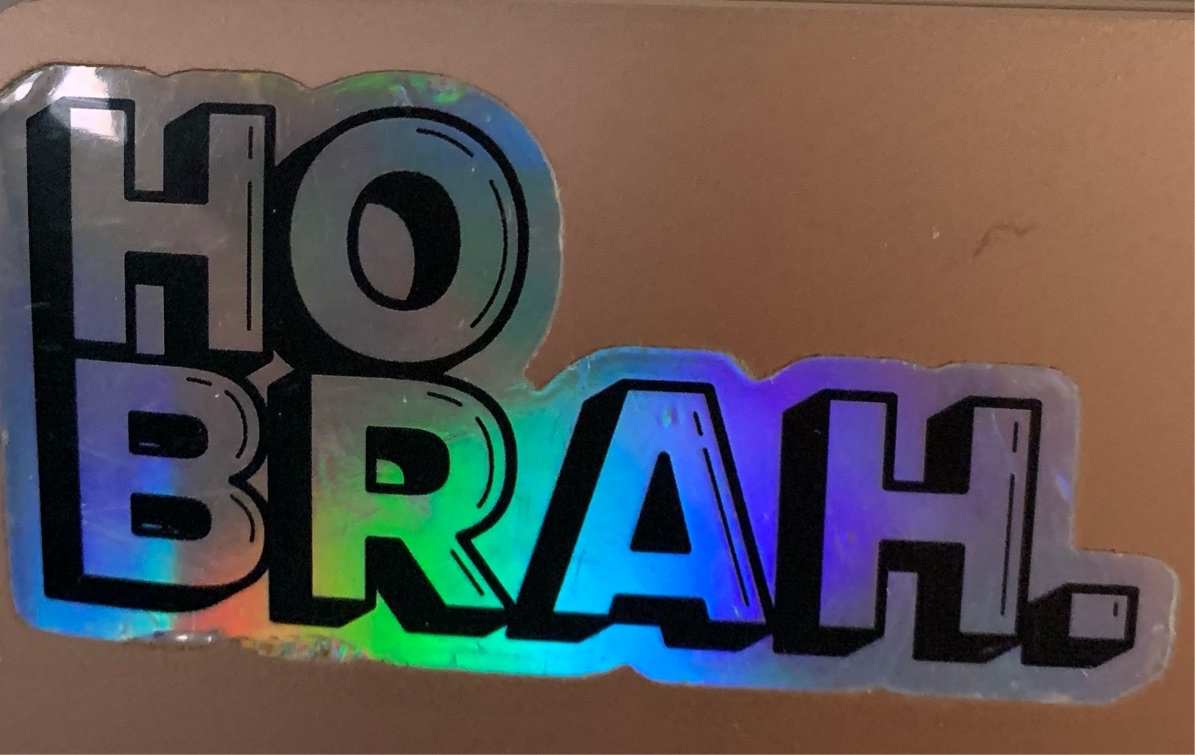
|
46057
|
|
United States
Honolulu
|
|
|
HC
Domain: Vinyl sticker
Purpose: gag/joke sticker
Intended audience: Individuals who enjoy saying "Ho Brah"
Print: 2x3" holographic sticker
Message: "Ho Brah" is to describe a feeling of intense excitement or disbelief
|
Multilingual Hawaiʻi
|
|
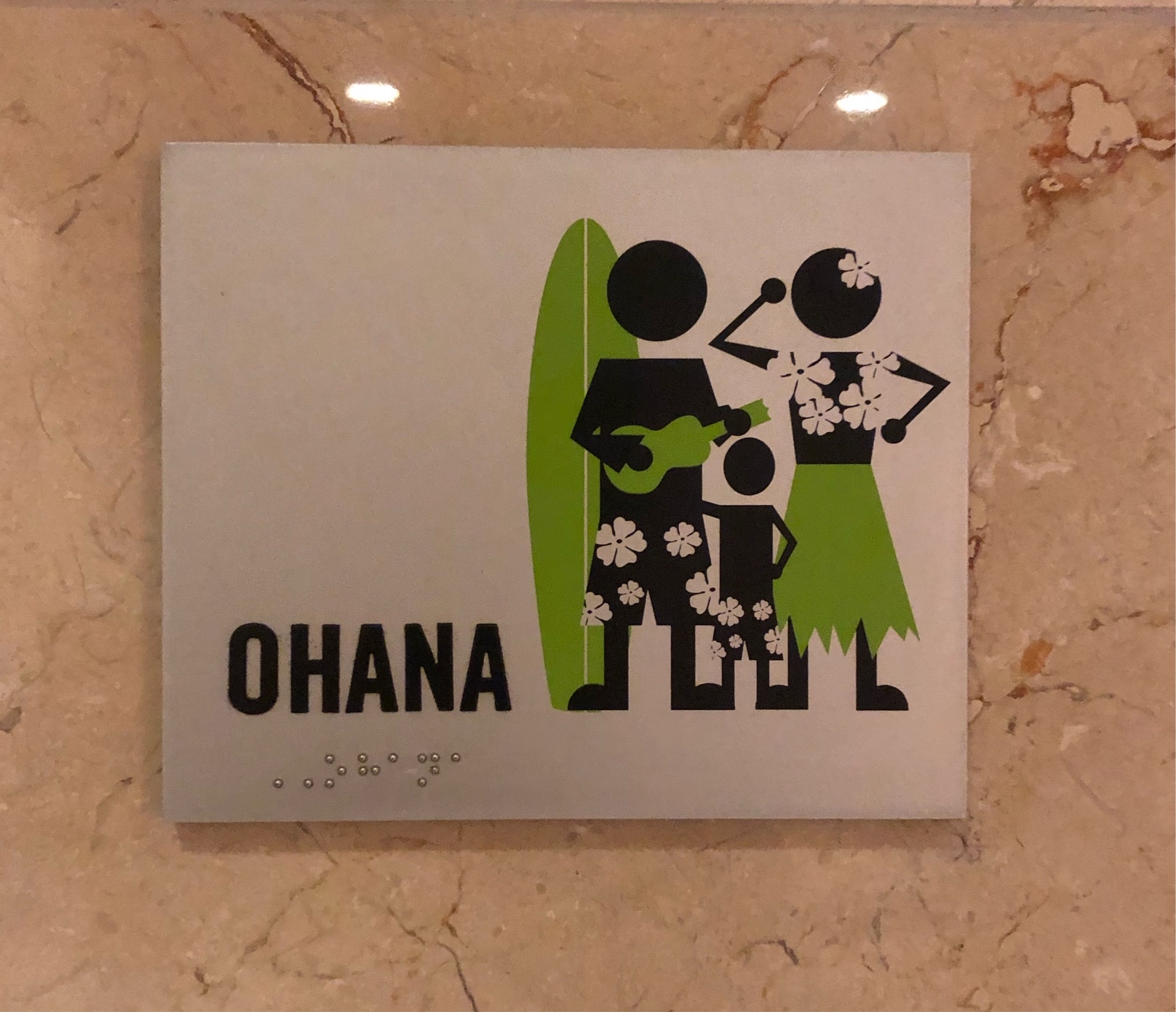
|
46058
|
|
United States
Honolulu
|
|
|
This was a sign for the bathroom for a family stall. I was at the movie theater and they had different bathroom options. It’s nice when they have the photo comic picture and the word to know exactly what it’s indicating. GM
|
Multilingual Hawaiʻi
|
|

|
46059
|
|
United States
Honolulu
|
|
|
HC
Domain: sign outside a retail record store
Purpose: To ask the customer to ring the bell
Print: vinyl label
Implied message: "Da" is the pidgin equivalent to the english word "the". "Please ring da bell", is a local way to ask to "Please ring the bell."
|
Multilingual Hawaiʻi
|
|
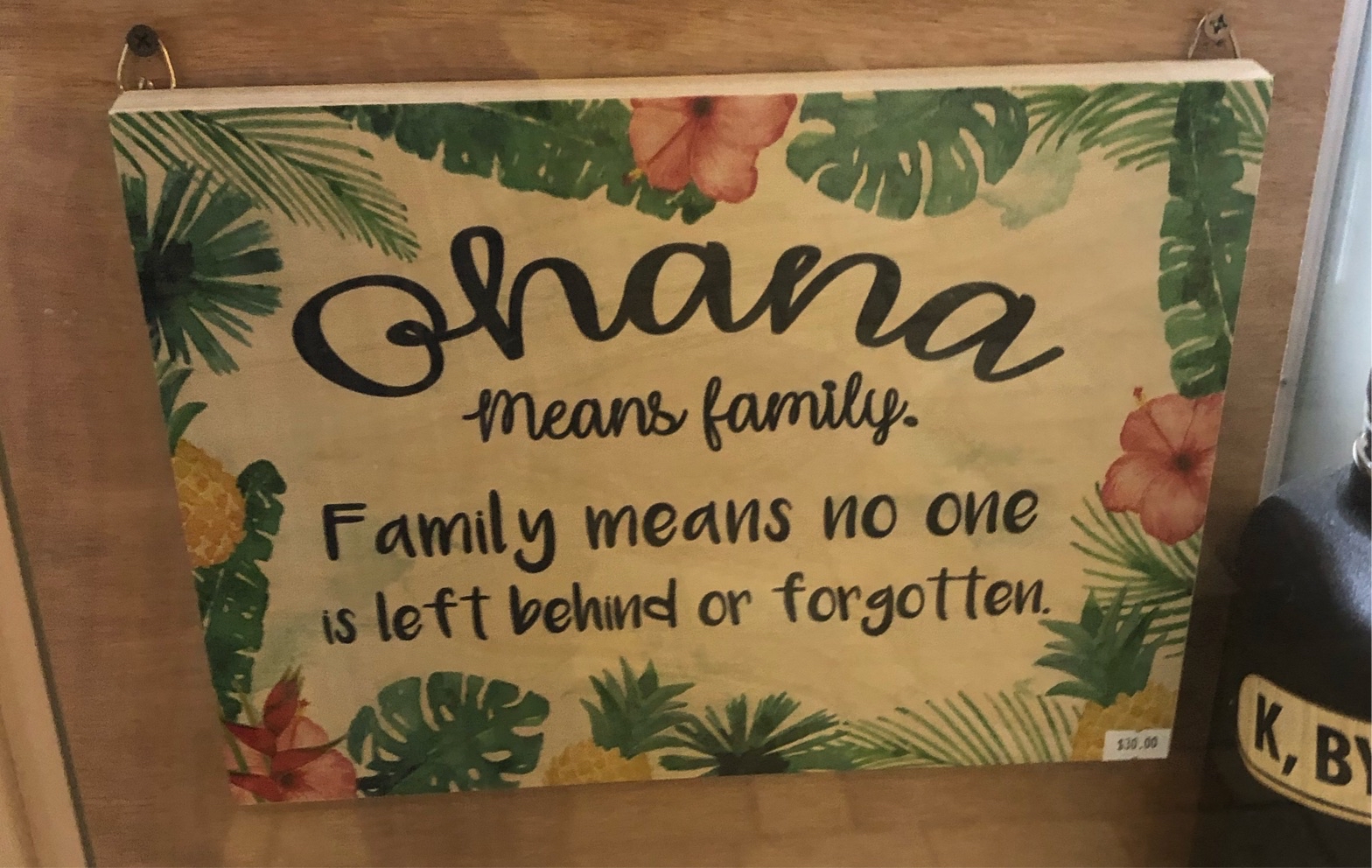
|
46060
|
|
United States
Honolulu
|
|
|
Ohana! I saw this sign at the mall and thought it was very cute! This is a nice sign to put up in a family home for decorations. It was being displayed on when of the stands at the mall. GM
|
Multilingual Hawaiʻi
|
|

|
46061
|
|
United States
Honolulu
|
|
|
Mahalo! I saw this sign at the mall at one of the stands by the food court. This is a great sign to decorate a house with, especially at the door to tell guests to take off shoes. GM
|
Multilingual Hawaiʻi
|
|

|
46062
|
|
United States
Honolulu
|
|
|
HC
Domain: Bathroom anti-smoking sign
Purpose: To say, "thank you for not smoking"
Intended Audience: Bathroom patrons
Print: Vinyl sticker
Message: "Thank you for not smoking"
|
Multilingual Hawaiʻi
|
|

|
46054
|
|
United States
Kaneohe
|
|
|
SU: Check Up #2
- What language is used on the sign?:
The language that is used on the sign is Hawai’i Creole or Pidgin.
- How is the language presented?:
The language is presented in big and small font in the colors green and white.
- Who is the audience?:
The audience is the general public as it could be directed towards the locals and non-locals.
- What is the domain?:
The domain is on the back of a car used as a bumper sticker.
- What is the sign telling people?:
The sign is telling people hello and see you later as the shaka is a greeting. This is kind of the equivalent of “Shoots, brah”.
- Why is Pidgin being used here?:
Pidgin is being used here because it is appropriate in the island of Hawai’i and all of the locals know what this means so a lot of people can relate to it.
|
Multilingual Hawaiʻi
|
|
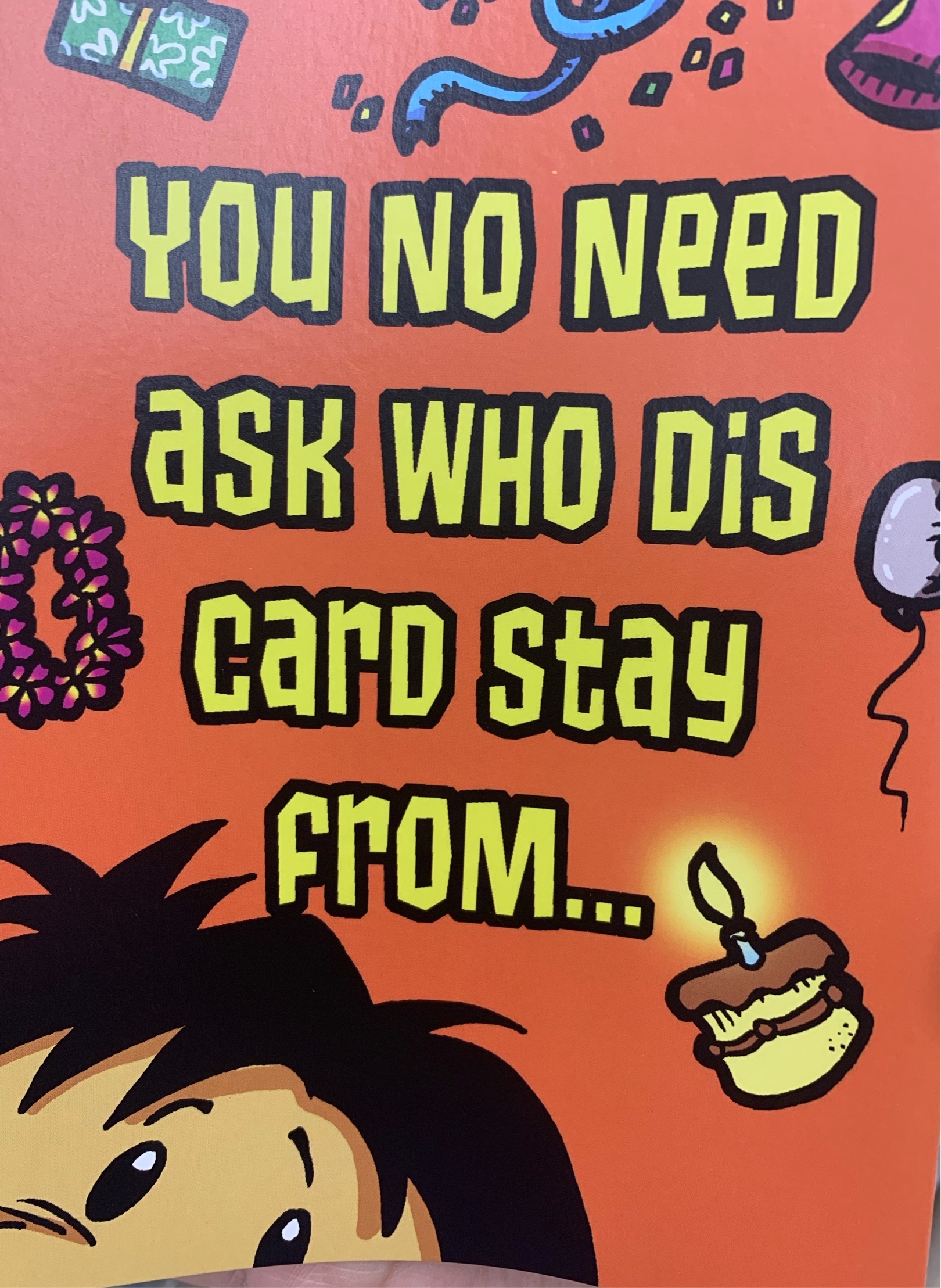
|
46055
|
|
United States
Kaneohe
|
|
|
SU: Check Up #2
- What languages are used on the sign?:
The languages that are used on the sign is Hawai’i Creole or Pidgin and English.
- How are the languages presented?:
The languages are presented in big, bolded, yellow and black letters.
- Who is the audience?:
The audience is the general public, but would probably be more directed to the locals.
- What is the domain?:
The domain is on a birthday card in a public store.
- What is the sign telling people?:
The sign is telling people that whoever is receiving this card should already know who is giving it to them.
- Why is Pidgin being used here?:
Posing is being used here because it is a unique way to write a birthday card and it is something especially unique to the people of Hawai’i. It is appropriate to give someone who knows and is exposed to the language of Pidgin.
|
Multilingual Hawaiʻi
|
|

|
46063
|
|
United States
Honolulu
|
|
|
“But no take mo bettah ones when you leave” I saw this sign in the mall in a stand by the food courts. It had both Hawaiian and Pidgin in it. GM
|
Multilingual Hawaiʻi
|
|
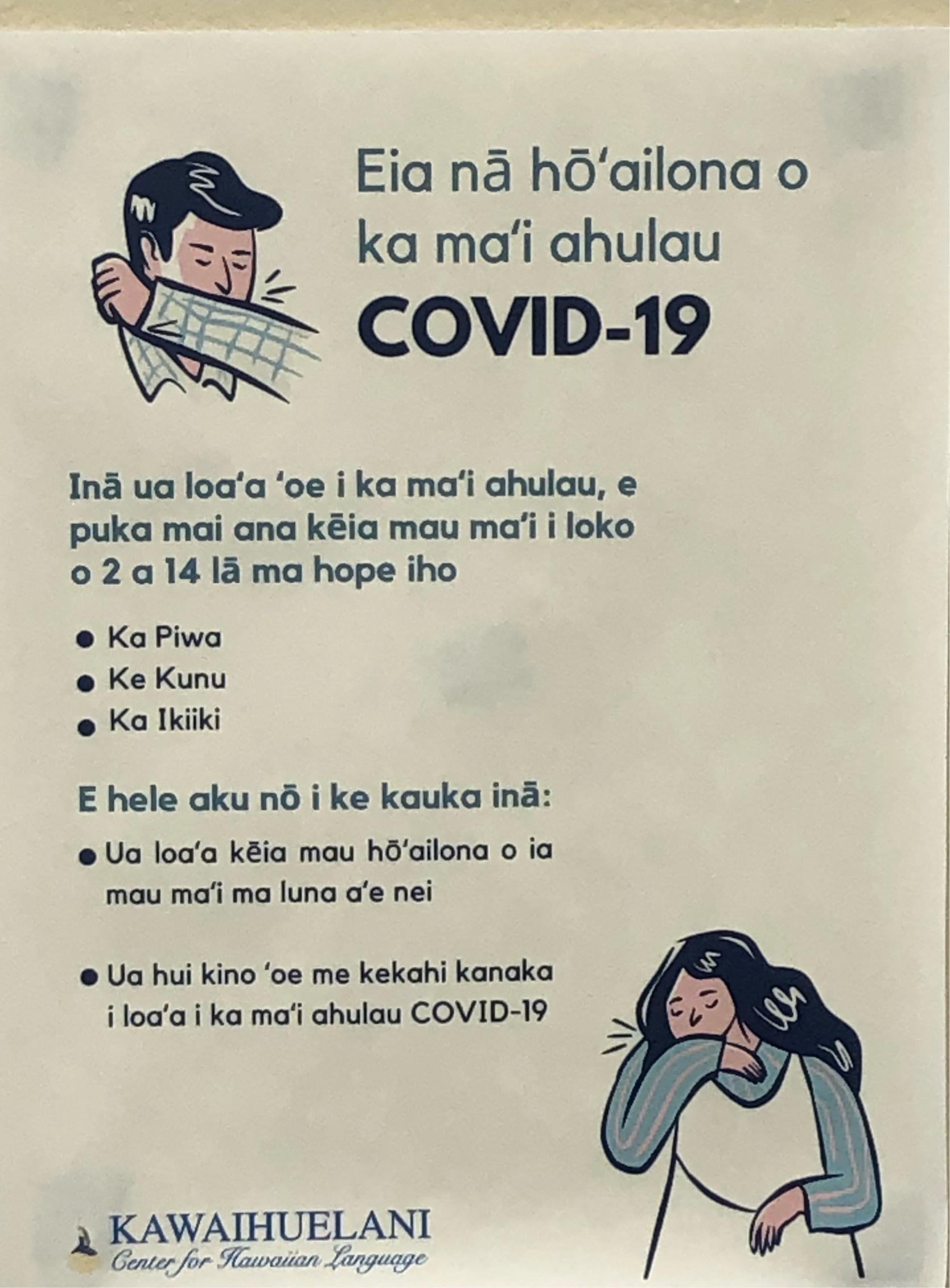
|
46064
|
|
United States
Honolulu
|
|
|
I saw this sign in the Hamilton library while I was sitting at one of the tables. I believe it’s saying the protocols of masking and what do to if you sneeze in the library. This sign is from the center for Hawaiian language. GM
|
Multilingual Hawaiʻi
|
|

|
46065
|
|
United States
Honolulu
|
|
|
I saw this sign when I was adventuring out! They are trying to get people to buy the product shown in the image- it was stated in pidgin, the we’re trying to get a specific audience to buy the product- they left a name and number to call if you are interested in the product. I found this poster very interesting! GM
|
Multilingual Hawaiʻi
|
|
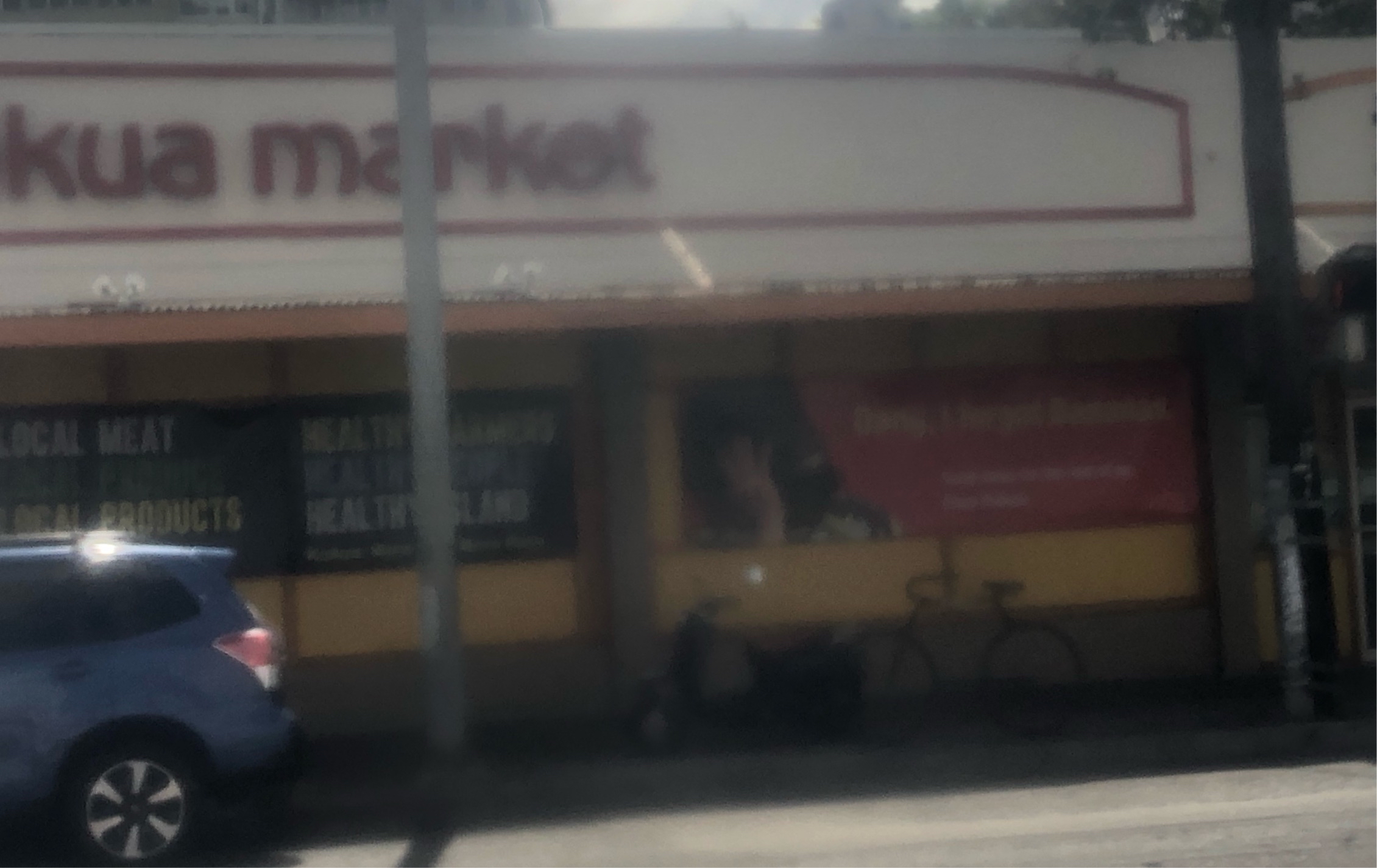
|
46066
|
|
United States
Honolulu
|
|
|
This image is a little blurry but I was on the bus and it started to move so this was the best picture I could get! I believe it’s saying something about health / groceries because behind the poster was the market / grocery store. GM
|
Multilingual Hawaiʻi
|
|

|
46067
|
|
United States
Honolulu
|
|
|
I was browsing target and saw another section of pidgin cards. I liked how it showed the different holidays and days! GM
|
Multilingual Hawaiʻi
|
|

|
46068
|
|
United States
Honolulu
|
|
|
AJR - Check in #2. The brand “Dakine” found in Ala Moana Shopping Center is quite popular both in the United States and across the globe. I would say that initially, the targeted audience was locals but after gaining the popularity it did, I think this has changed. I’m not sure what the history behind this company is but they seem to be profiting off of the common Pidgin word
|
Multilingual Hawaiʻi
|
|

|
46069
|
|
United States
Honolulu
|
|
|
AJR - Check in #2. This license plate cover was found in the apparel store T&C. The language exhibited is primarily Pidgin. I would say the intended audience is both locals and non-locals, given that it is in the mall in a popular apparel store that anyone can shop at. Promoting the sale of products like this that use Pidgin draws a very fine line between promoting local pride and cultural appropriation
|
Multilingual Hawaiʻi
|
|

|
46071
|
|
United States
Honolulu
|
|
|
AJR - Check in #2. This picture shows the use of the Pidgin phrase “Howzit,” followed by “The Aloha Movement” on a sticker. Similar to my previous photo, this was also found in the T&C apparel store and again draws a very fine line between promoting local identity and cultural appropriation. I think what would make this sticker lean more towards promoting local pride would be if it were sold in a local store outside of the mall. By doing this, it would change the intended audience and gear it more towards locals rather than tourists.
|
Multilingual Hawaiʻi
|
|

|
46072
|
|
United States
Honolulu
|
|
|
The domain in particular is for UH Manoa students and also locals who care about the sacred land of Hawaii. It is meant to get the attention of locals and students who may know about the TMT on Maunakea. The Hawaiian in this protests against the building of the thirty meter telescope. ‘A‘ole means to deny and refuse to do a thing so in this case it refuses the building of the TMT. The intended audience is locals, Hawaiians, scientists, people who advocate for the building to sway their opinion. It is printed on cardboard. Again, the implied message is to say no to the building of TMT as it will destroy the sacred land of the Hawaiians. - CQ
|
Multilingual Hawaiʻi
|
|